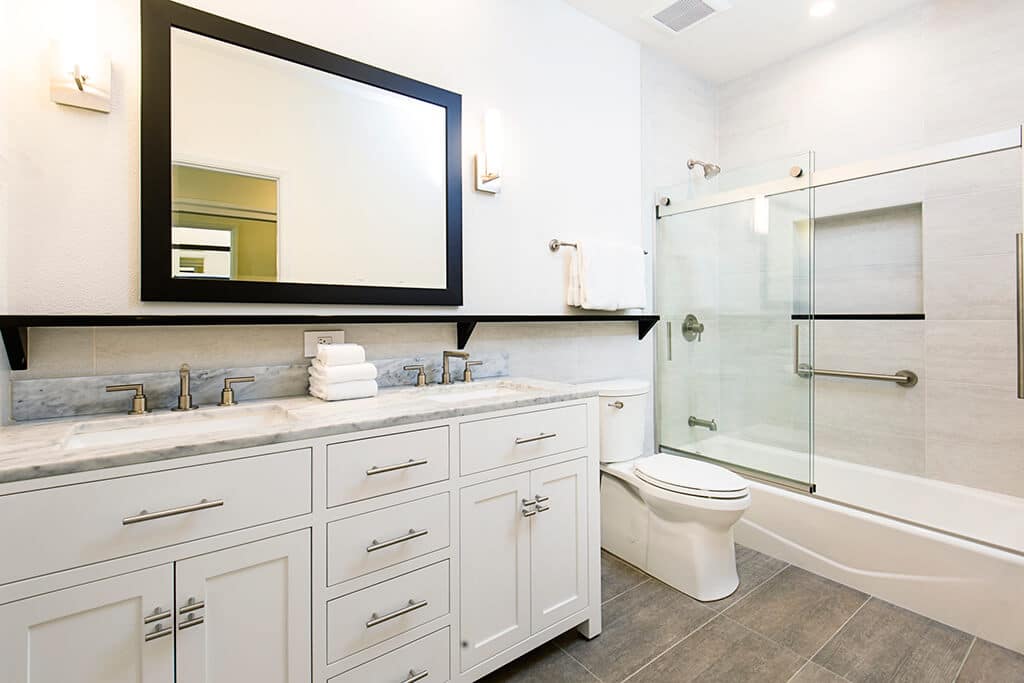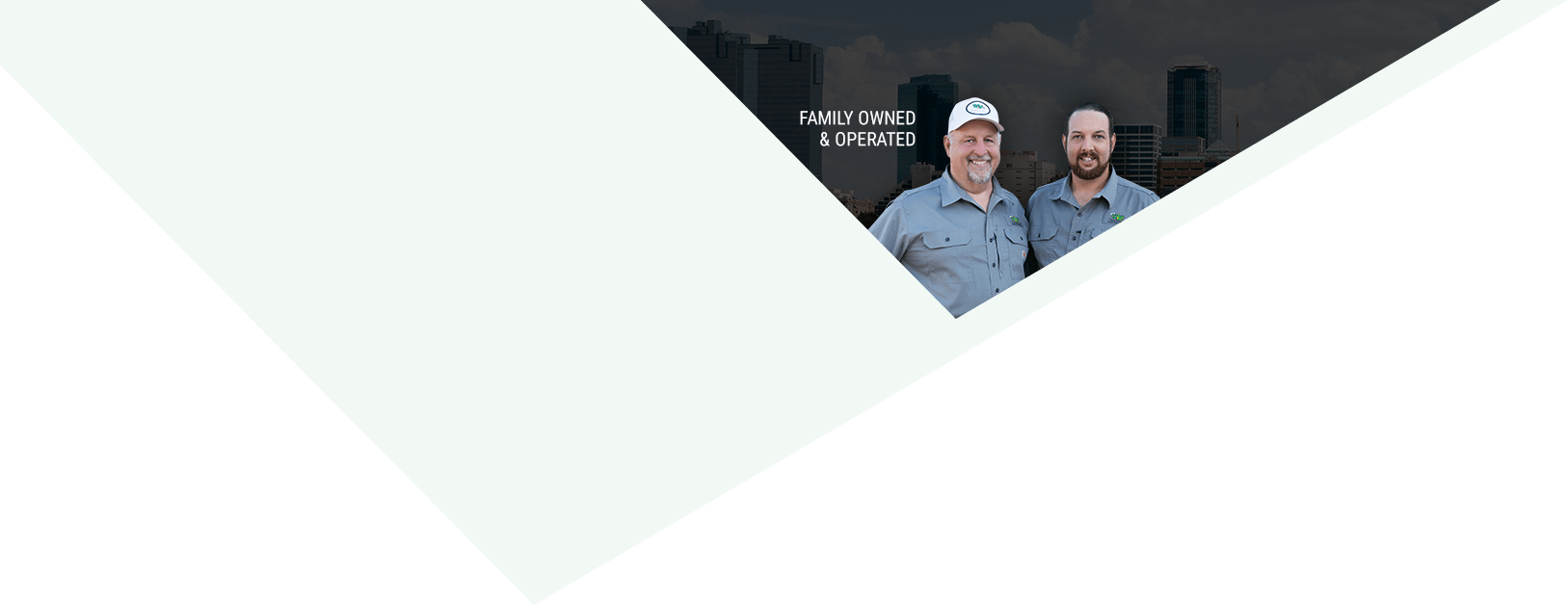
How A Plumber Can Help To Prevent Mold And Mildew from Growing In Your Bathroom | Bedford, TX
Photo By YinYang at istock
If you’re a homeowner whose house is proud, you’ll want to ensure that you don’t have mold and mildew growing in your bathroom. Mold and mildew are unsightly and can also cause health problems, especially in young children and the elderly. They both thrive in damp areas, so you’ll need to keep your bathroom as dry as possible so that the conditions aren’t right for mold and mildew to grow.
Keeping your plumbing system in good working order and ensuring that there are no dripping faucets or hidden leaks can be advantageous. If you live in Bedford, TX and are looking for a plumber, don’t hesitate to contact Tioga Plumbing & Electric.
This article will look at the common things that cause mold and mildew in your bathroom and give you some tips on preventing these problems. We’ll also tell you when to call in a plumber.
Problems Caused by Mold and Mildew
Mold and mildew are unpleasant as they can leave stains on your bathroom walls. They can also put the health of your family at risk. The worst thing about mold and mildew is that you often don’t notice their effect until it’s too late.
Studies show that exposure to mold and mildew is harmful over the long term, especially to children and older adults. It can cause respiratory problems such as coughing, wheezing, a blocked nose, eye irritation, and skin and throat irritation.
Plumbing Problems That Can Cause Mold
If you’ve had a leaking pipe that has flooded your home, you’ll be at risk of mold and mildew growth until your property has adequately dried out. Some small, less obvious plumbing problems can also cause mold and mildew to grow in your bathroom. If you notice any problems, call a professional as soon as possible.
Leaking Sinks
If you have a leak that has gone unnoticed, it will add moisture to your bathroom and great the perfect conditions for mold and mildew to grow. Sometimes leaks can be hidden if you keep towels and toiletries under your sink. Cupboards under sinks are dark, and if there’s a leak will become moist. There will also be a lack of fresh air–all these things will encourage mold growth.
It’s a good idea to check your plumbing system frequently, and if you notice any problems, call in a plumber. Hidden leaks can sometimes be caused as a result of faulty pipes in your wall space. Finding these leaks can be very challenging, and in most cases, they are only detected when you notice moisture leaking through the wall or mold and mildew that’s growing on the wall.
Hidden leaks are likely to cause discoloration to wall paint and can also warp and damage floor surfaces. If you think you have a hidden leak, call a plumber who can carry out leak detection.
Clogged Drains
If your drain becomes blocked, water won’t move through your plumbing system as quickly as it should. This can create standing water in your bathroom, creating germs, bacteria, and a bad smell. Fungal growth often happens when drains are clogged or sewer lines blocked. These issues will leave dirty stagnant water in their wake.
Don’t leave your drain clogged for too long; contact a plumber as soon as you notice signs that your drain is clogged.
Cleaning Tips to Help You Deal with Mold and Mildew
If you’ve recently had a plumbing emergency that has left your home damp and prone to mold and mildew growth, it’s essential to clean up as soon as possible. Make sure that you dry hidden areas such as cavities. There may also be water in wall spaces, which is hard to get to. Using a heater in your bathroom will help to dry the space out.
After a leak, make sure that you wipe down any wooden paneling or cabinets as wood is prone to swelling and can warp if it’s damp. Here are some tips to help you keep your bathroom free of mold and mildew after you’ve cleaned up from a leak.
Buy a Good Squeegee
The best way to clean bathroom tiles and glass shower doors is with a squeegee. Mold and mildew are more common during the winter months. Make sure that you keep your bathroom dry by squeegeeing off excess water after having a shower. This will help to reduce the moisture in your bathroom. A squeegee is a handy tool as it has a flat, rubber blade that allows you to get rid of liquids on flat surfaces. It’s very quick and easy to use.
Run a Fan After Showering
Bathrooms are an excellent breeding ground for molds, mildew, and bacteria. Bathrooms often lack ventilation, and after showering, the air will be moist and humid. For this reason, it’s a good idea to run an exhaust fan after showering. This will help remove moisture and unwanted odor from the interior environment.
It’s a good idea to run a fan a few minutes after you’ve had a bath or shower. This will prevent mold and mildew from growing.
Dry Bath Towels
Don’t leave wet bath towels hanging around in your bathroom, as this can cause mold to grow. Molds can even start growing in the towel’s fabric, so it’s best to hang your towel in a dry open space. Let your towel air dry, as this will allow moisture to escape.
Use a Mold And Mildew Cleaner
If you’ve noticed mold and mildew in your bathroom, you should clean it using a specialty cleaning product. Sometimes mold and mildew can be stubborn and challenging to get rid of. Using a cleaning solution will help you get rid of the problem. There are many products available that will prevent mold from regrowing.
The best way to stop mold and mildew from growing is to clean regularly. Pay particular attention to shower doors, window frames, and floor seals.
Tioga Plumbing & Electric, Plumber
If you live in Bedford, TX or the surrounding area and are looking for a plumber, don’t hesitate to contact Tioga Plumbing & Electric. Call a plumber today on 469-789-1293 the team will be happy to help you. They can provide leak detection and can also provide an emergency plumber.




